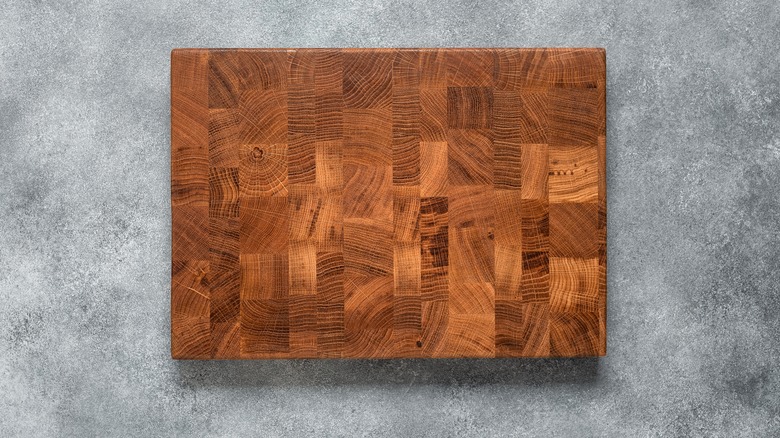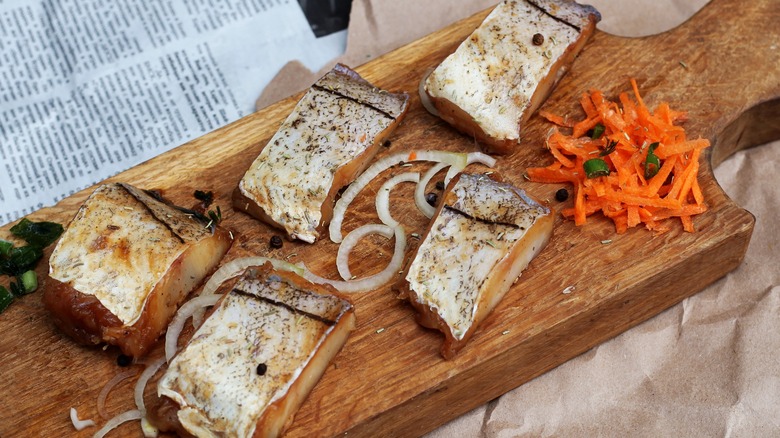Oak Cutting Boards Look Gorgeous, But There's One Big Problem
Cutting boards are a dime a dozen, and if you've ever gone shopping for a new one, you've probably come across plenty of different materials they can be made from. One option that's quite common is oak, which is a sleek, glossy wood that makes for high-quality boards. It's robust and won't damage your knives when you're chopping veggies or prepping meats on the board, making it a popular choice. Better yet, the boards are regenerative, meaning you won't see lasting damage from a few knicks with your knife.
But before you pick up cutting boards made from this material, it may be helpful to know that they've actually got one major flaw: Oak is a porous wood. That might not sound like a big deal, but it can lead to all kinds of issues. That's because it makes it easier for germs, bacteria, and food particles to make their way into your cutting board.
Why porous oak cutting boards are a problem
Oak's large pores pose a few problems. Firstly, they make it easier for bacteria to make their way into the boards. When they do so, this can make it easier for foodborne illnesses to spread, particularly if you're not careful about how you wash the boards. Secondly, those large pores can lead to moisture absorption. When there's a lot of moisture in your cutting board, this can lead to warping or even rot if you're not careful. Lastly, cross-contamination can also become a bigger issue if you use the same board to chop multiple items since it can be tricky to get meat juices out of the board's pores.
The good news is that you can get around these cutting-board caveats with a couple of tricks. For one thing, flip your cutting board after every use to reduce the damage to one side. This can avoid wear and tear, which can exacerbate waterlogging, bacteria, and other issues. Another trick is to store wooden cutting boards vertically, helping prevent moisture from building up by allowing water to drain more freely. If you're a fan of oak, these tricks can be a good workaround.
The positives to oak cutting boards
Despite all these downsides, there are still a few reasons why you might want to purchase an oak cutting board. For one thing, oak may actually have antiseptic properties. So, as long as you care for them properly, you may be able to counteract some of the downsides of the material.
For one thing, oak is a fairly heavy wood, which means the board stays put on your countertop. This is a big bonus, especially from plastic, which is a lightweight material that can slip and slide if you're not careful. One cutting board mistake you may not realize you're making is to slap it on the countertop and call it a day. However, to avoid this issue, one easy trick is to place a wet paper towel or cloth under the board to help hold it in place.
And lastly, another perk of oak cutting boards is their appearance. Their sleek, wooden design makes them ideal for use as charcuterie boards or decorative placemats on your dinner table. It's up to you to weigh the pros and cons and decide whether or not oak is the right material for your cutting boards the next time you shop.


